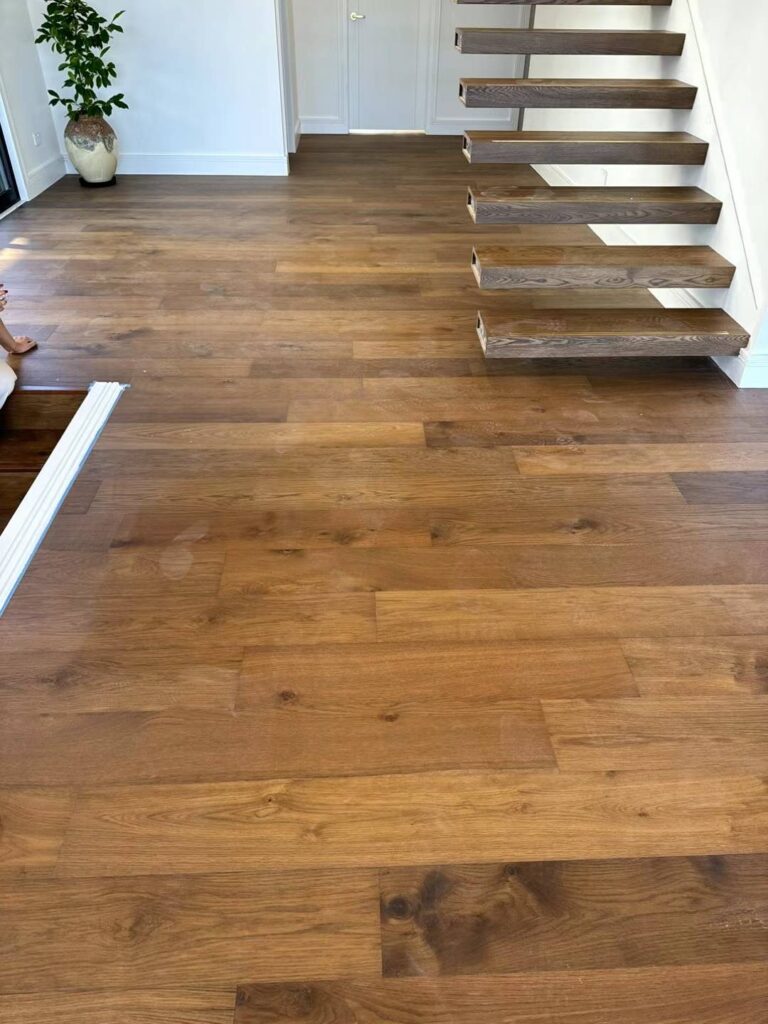Real wooden flooring and veneer wood add warmth, character, and value to any space, but it also requires care to maintain its beauty over time. Daily life, with its myriad activities, can lead to inevitable dents and scratches on your wooden floors.
Importance of Maintenance
Maintaining your wooden flooring and veneer is crucial for several reasons. Firstly, it helps in preserving the floor’s aesthetic appeal. Regular cleaning and care can prevent dirt and grit from causing scratches and wear. Secondly, maintenance protects your investment. Wooden floors can last for decades when properly cared for, retaining their value and appeal. Lastly, it contributes to a healthier indoor environment by reducing dust and allergens that can accumulate in scratches and dents.

Wooden Flooring and veneer Maintenance Guide
Our wooden flooring maintenance guide offers comprehensive tips and strategies for keeping your floors pristine. Here are some key points:
Regular Cleaning: Sweep, dust, or vacuum regularly to remove debris that can scratch the floor. Use a cleaner recommended for wooden floors and avoid water or steam mops, which can damage the wood.
Preventive Measures: Place felt pads under furniture legs, use protective mats in high-traffic areas, and keep pets’ nails trimmed to minimize scratches and dents.
Immediate Attention to Spills: Clean up spills immediately to prevent water damage and stains.
Despite these efforts, it’s natural for wooden floors and veneer to accumulate some dents and scratches over time. This wear can even add to the floor’s character, telling the story of the home and its inhabitants. However, if you desire to restore your floor to a newer-looking condition, recoating or refinishing may be necessary.

Recoating and Refinishing
Recoating: This process involves applying a new top coat of finish to the existing floor. It’s a suitable option for floors with minimal damage, restoring shine and providing a fresh protective layer. Recoating can often be done without sanding down the wood, making it a less invasive and more cost-effective option.
Refinishing: For floors with more extensive damage, refinishing is the best choice. This process involves sanding the floor to bare wood and then applying a new stain and finish. Refinishing can dramatically transform the appearance of your floor, making it look brand new.
For detailed instructions and tips on both recoating and refinishing, please refer to the wooden floor and veneer refinishing page. You’ll find step-by-step guides, recommended products, and expert advice to ensure the best results for your wooden flooring.




